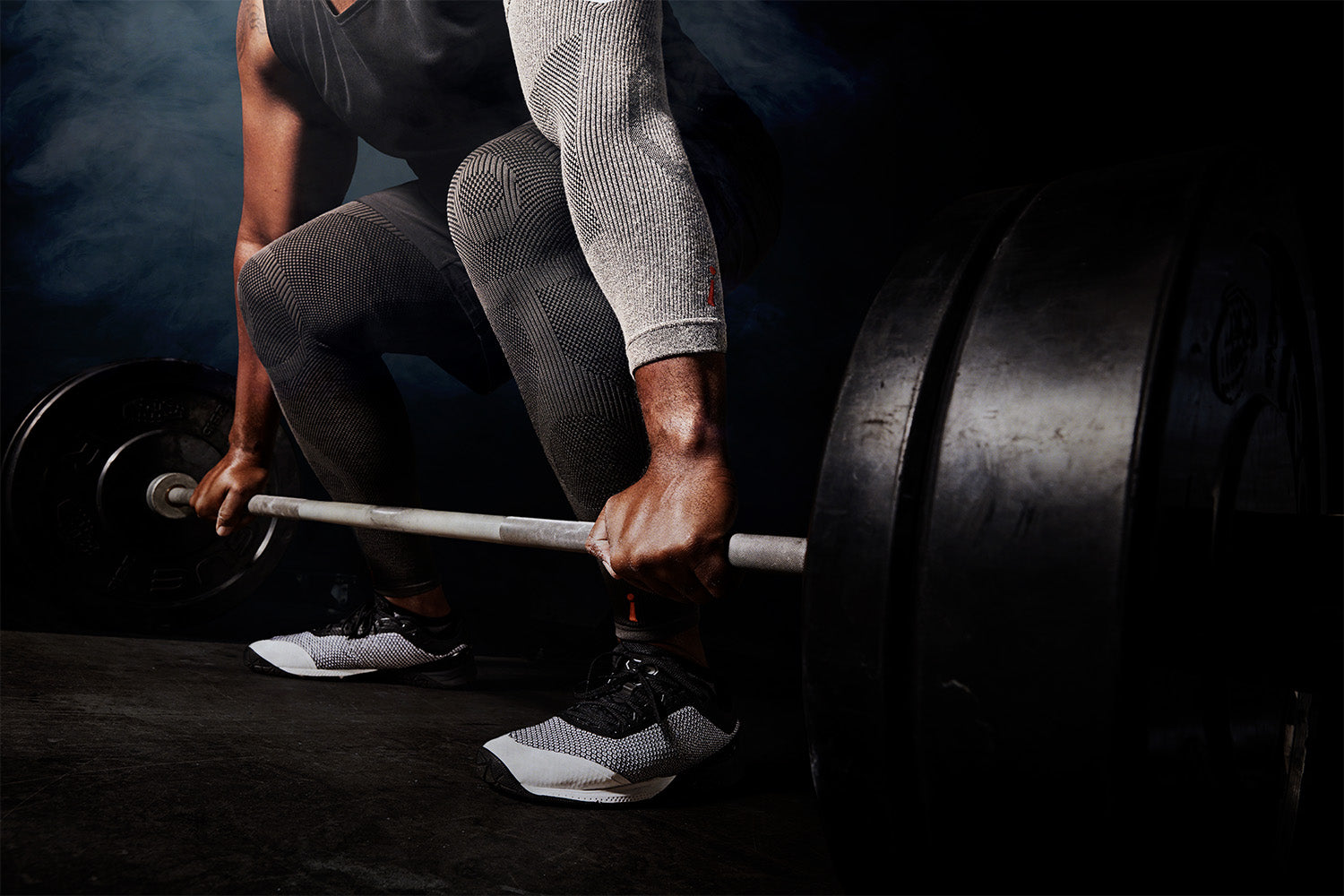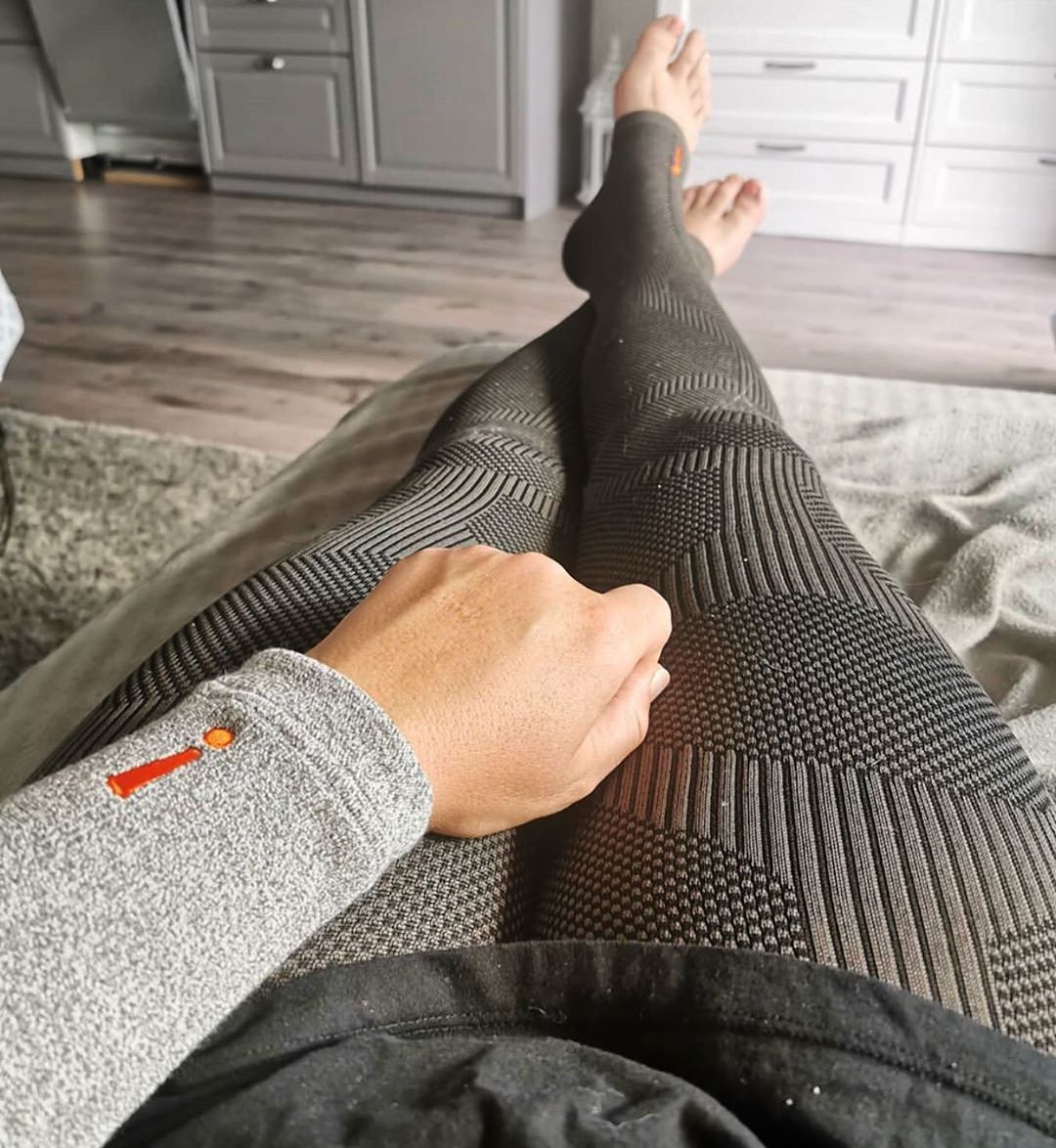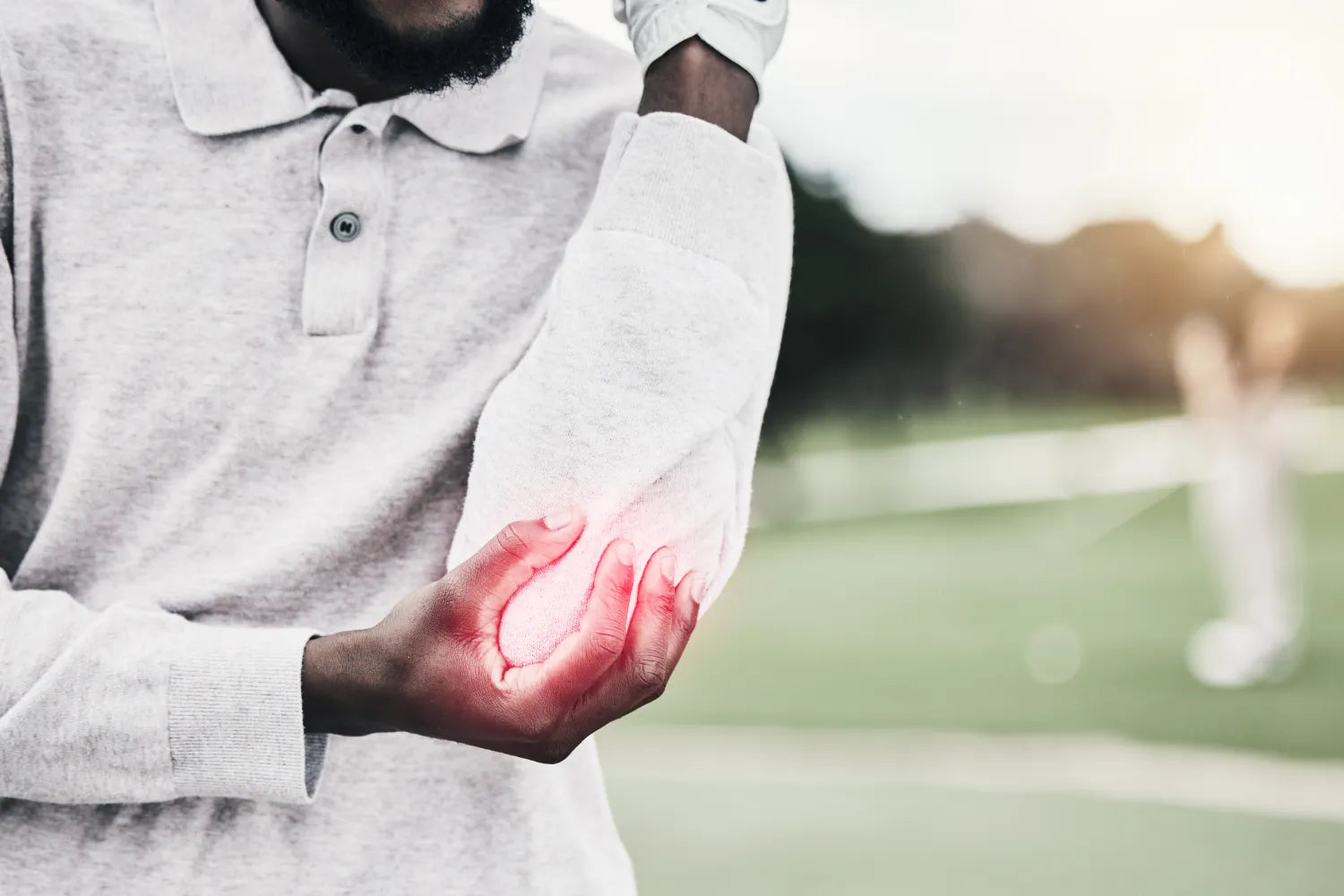Golfer's elbow, a condition causing pain and discomfort on the inner side of the elbow, isn't exclusive to golfers. Whether you're an avid golfer or engage in activities requiring repetitive arm movements, understanding this condition and adopting targeted exercises is key to alleviating symptoms and preventing long-term issues.
In this guide, we closely examine effective exercises designed to improve golfer's elbow, promoting strength, flexibility, and overall elbow health.
What Is Golfer's Elbow?
Golfer's elbow, clinically known as medial epicondylitis, is characterized by pain and inflammation on the inner side of the elbow, where the forearm tendons attach to the bony bump. Despite its name, this condition isn't confined to golfers; it can affect anyone engaging in repetitive wrist and arm motions.
Common causes include overuse of the forearm muscles and tendons, leading to microscopic tears and subsequent inflammation. Activities such as golf, racquet sports, weightlifting, and even certain occupations involving repetitive gripping can contribute to developing golfer's elbow.
Symptoms often manifest as pain and tenderness on the inner side of the elbow, worsening with gripping or squeezing motions. Understanding the condition involves recognizing its impact on both golfers and non-golfers, emphasizing the need for targeted exercises to alleviate discomfort and prevent further strain.
By exploring effective exercises and using supportive gear, like the elbow sleeve from Incrediwear, individuals can empower themselves to manage and overcome golfer's elbow. Over time, you can successfully restore strength and flexibility to the affected arm.
What Are 6 Exercises To Improve Golfer’s Elbow?
1. Wrist Curls
Strengthening the forearm muscles is fundamental when combating golfer's elbow. Begin with wrist curls, a simple yet effective exercise.
Holding a light dumbbell, rest your forearm on a flat surface, allowing your wrist to hang off the edge. Lift the weight by curling your wrist upward, then slowly lower it. Reverse wrist curls target the opposite side of the forearm, promoting balance.
2. Grip Exercises
Grip strengthening exercises, such as squeezing a stress ball or using a grip strengthener, fortify the muscles involved in gripping activities.
As you begin doing these exercises, start with light resistance and gradually increase intensity. Consistency and proper form are paramount to ensure gradual and effective strengthening, reducing strain on the elbow.
3. Wrist Flexor Stretches
Flexibility plays a crucial role in managing and preventing golfer's elbow. Wrist flexor stretches are essential to enhance flexibility in the forearm.
Extend your arm in front of you, palm facing down, and gently press down on your fingers with the opposite hand. Hold for 15 to 30 seconds, feeling the stretch along the forearm. Reverse the stretch by turning your palm upward and applying gentle pressure to the back of your hand.
4. Dynamic Stretches
Dynamic stretches, like wrist circles, encourage fluidity in the joint. Perform controlled circles with your wrists in both directions.
Also, incorporate static stretches into your routine by extending your arm across your chest using the opposite hand to pull your fingers gently toward you. Repeat on both arms.
These stretches should be performed with care, avoiding any sharp pain. Incorporating these flexibility-focused exercises into your regimen enhances the range of motion in your forearm, contributing to the overall management of the golfer's elbow.
5. Wrist Pronation and Supination
Improving the range of motion in the affected elbow is integral to overcoming golfer's elbow. Pronation and supination exercises target this objective.
Hold a light dumbbell and position your arm at your side, elbow bent at 90 degrees. Rotate your forearm inward (pronation) and then outward (supination). Perform these movements in a controlled manner, focusing on the range rather than weight.
6. Wrist Pronation With Resistance
Another effective exercise is wrist pronation against resistance. Rest your forearm on a table, palm facing down, and use your opposite hand to provide gentle resistance as you rotate your wrist inward. This helps engage the muscles responsible for forearm rotation and enhances flexibility.
Regularly incorporating these range of motion exercises ensures a gradual and progressive approach, fostering improved mobility in the elbow joint and reducing stiffness associated with golfer's elbow.
Can Cardiovascular Exercises Help Golfer’s Elbow?
While specific exercises target golfer's elbow directly, incorporating cardiovascular exercises into your routine contributes to overall elbow health. Low-impact cardiovascular exercises, such as cycling or swimming, promote blood flow and aid in the healing process.
These activities enhance cardiovascular fitness without imposing excessive stress on the affected elbow. Focus on maintaining a moderate intensity to ensure a cardiovascular benefit without exacerbating symptoms.
Cycling, whether on a stationary bike or outdoors, provides an excellent option, allowing for rhythmic motion without significant impact on the elbows. Swimming, particularly the freestyle stroke, engages the entire body while minimizing stress on the arms.
Consistency is key; aim for at least 30 minutes of cardiovascular exercise most days of the week. By integrating these exercises, you support your cardiovascular health and contribute to the comprehensive approach to managing and preventing golfer's elbow.
How Can I Manage Golfer’s Elbow Pain?
Effectively managing pain associated with golfer's elbow is crucial for ongoing comfort and rehabilitation.
-
Ice: Beyond exercises, consider applying ice to the affected area for 15 to 20 minutes at regular intervals, especially after engaging in activities that may exacerbate symptoms.
-
OTC Medication: Non-prescription anti-inflammatory medications may offer relief, but consult a healthcare professional for guidance.
-
Elbow Sleeve: For additional support, explore the benefits of a golf elbow sleeve by Incrediwear. Crafted with innovative materials, such sleeves provide targeted support without restricting movement, soothing discomfort and supporting circulation. When wearing such sleeves, ensure a snug yet comfortable fit to maximize their effectiveness.
-
Rest: Rest is equally vital; avoid overusing the affected arm and allow ample time for recovery between activities.
Combining these pain management strategies with targeted exercises creates a holistic approach to addressing golfer's elbow discomfort.
How Can I Prevent Golfer’s Elbow?
Preventing golfer's elbow involves adopting lifestyle changes and proactive measures. Begin by incorporating proper warm-ups before engaging in activities that stress the forearm, such as golf or weightlifting.
Gradually increase the intensity and duration of activities to avoid sudden strain. Evaluate your technique, ensuring proper form and ergonomics during sports or workplace tasks. Also, consider using equipment with ergonomic designs to reduce unnecessary stress on the forearm.
If you're prone to golfer's elbow, wearing a supportive brace during activities may provide additional stability. Strengthening the overall upper body, especially the shoulder and back muscles, contributes to improved support for the forearm.
Additionally, regular breaks during repetitive tasks minimize strain, allowing the muscles to recover. By integrating these preventive measures into your routine and making mindful lifestyle adjustments, you reduce the risk of golfer's elbow and promote long-term elbow health.
What Are Ergonomic Considerations for Golfer’s Elbow?
Ergonomics plays a vital role in managing and preventing golfers' elbows. Evaluate your workspace, ensuring proper alignment of your desk, chair, and computer to minimize strain on the arms and elbows.
Invest in ergonomic accessories, such as a keyboard and mouse, to promote a natural and comfortable hand position. For golfers, assess the grip size and handle of clubs, opting for those that reduce strain.
Incorporating ergonomic principles into your daily activities significantly contributes to maintaining optimal joint health, minimizing the risk of golfer's elbow, and fostering a more comfortable and sustainable lifestyle.
Wrapping Up
Addressing golfer's elbow involves a multifaceted approach, combining targeted exercises, pain management strategies, and preventive measures. The exercises outlined, focusing on strengthening, flexibility, and range of motion, serve as valuable tools in rehabilitation.
Consider incorporating the Incrediwear elbow sleeve, offering support and relief without compromising movement. Proactive measures and lifestyle adjustments, such as proper warm-ups, technique evaluation, and regular breaks, play pivotal roles in preventing recurring discomfort.
It's essential to approach golfer's elbow holistically, recognizing the interconnectedness of exercise, pain management, and preventive care. By embracing these practices, individuals can alleviate current symptoms and foster long-term elbow health, enabling a return to activities with enhanced strength and reduced risk of recurrence.
Links:
Golfer's elbow - Symptoms and causes | Mayo Clinic
Read more

Medically Reviewed By | Dr. Kate Panawash, PT, NCS, DPT You might be hurting your training progress without even realizing it. We all want to get the most progress from our workouts and maximize ou...

Medically Reviewed By | Dr. Kate Panawash, PT, NCS, DPT Did you know while you sleep, you can recover even faster with Incrediwear? You're optimizing your body's natural recovery process by increas...






Leave a comment
All comments are moderated before being published.
This site is protected by hCaptcha and the hCaptcha Privacy Policy and Terms of Service apply.